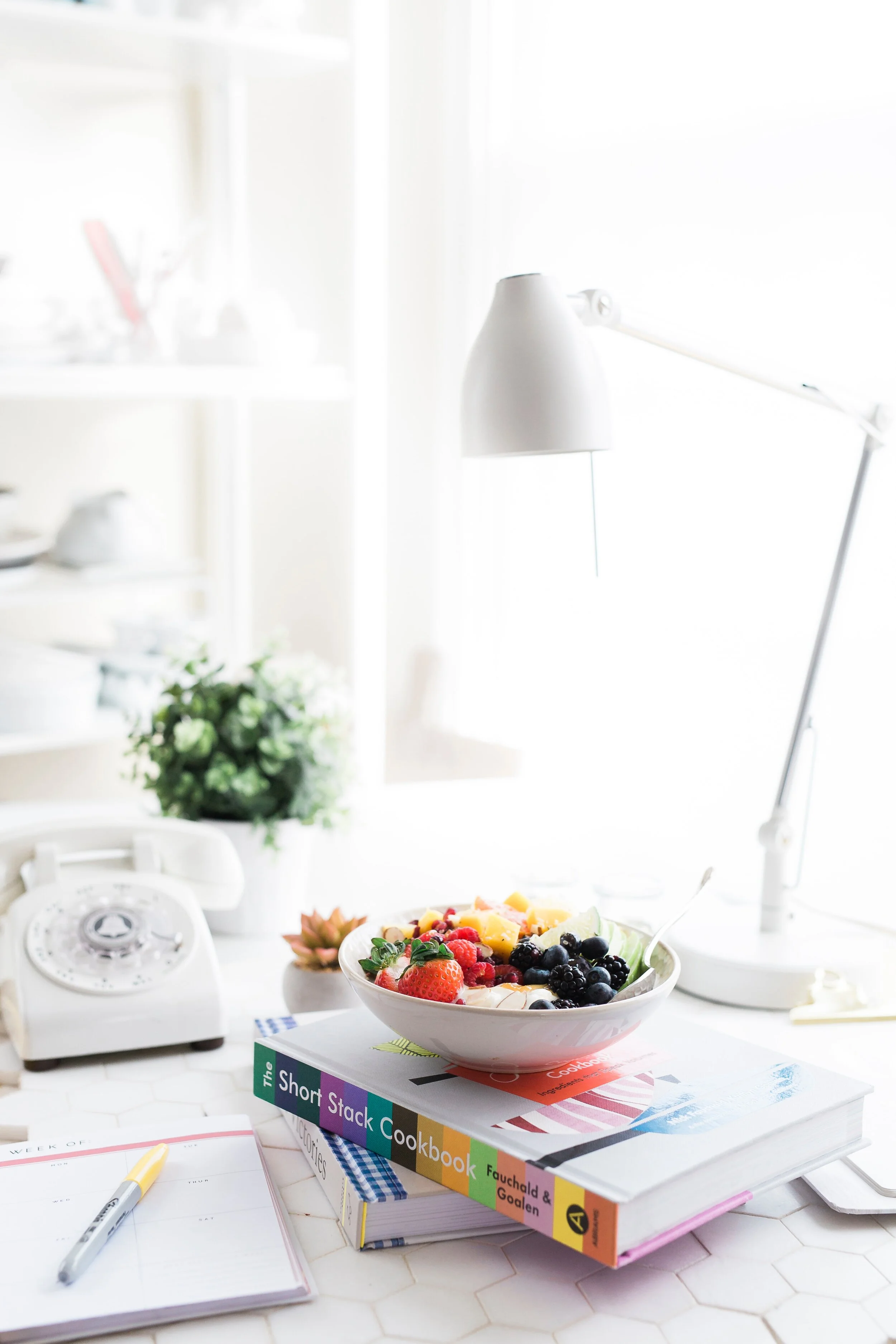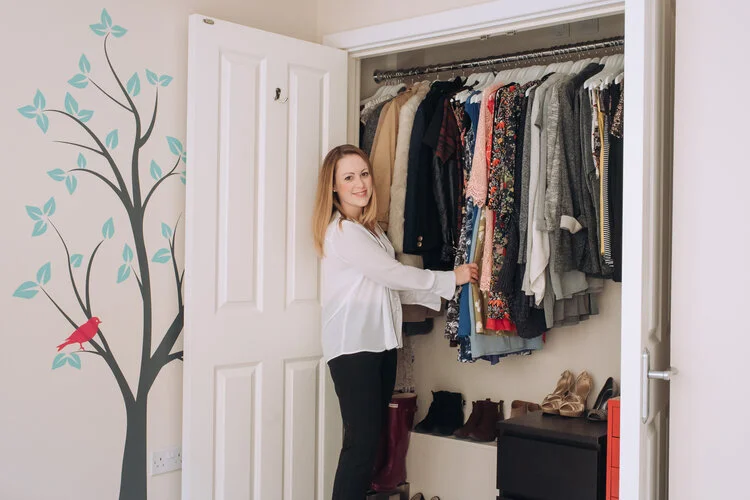KonMari Basics: How to Visualise your Ideal Lifestyle and Living Environment
What’s one of the main reasons why people don’t finish their KonMari tidying event? It’s because they miss out on an essential first step: spending time to visualise their ideal lifestyle and living environment before they start taking things out of their cupboards. For Marie’s video introduction on this topic, click here. Marie tells us to take a moment to imagine our ideal lifestyle; I think the more time you invest in creating your vision, the more likely you are to stay committed to the process of tidying up.
Most people I know who have read The Life-Changing Magic of Tidying admit to feeling so inspired to get started on their decluttering journey, the jump straight into the discarding phase. They may tidy their clothes, move on to books but in my experience, most of them stall when they reach papers. In some circumstances, people may not even complete their clothing category because they feel so overwhelmed and lose momentum early on. We lose motivation for a number of reasons:
We feel sentimentally attached to our items and fear letting them go.
We have too many items and experience overwhelm.
We don’t know how to complete joy checks properly, meaning we lack confidence in our decision making skills and we don’t know the correct questions to ask ourselves when we’re going through our things. This prevents us from moving forward.
We allow or invite interference from others. When people question how much we’re getting rid of or make us feel guilty about what we’re saying goodbye to, this can make us feel like we’re making the wrong choices.
What can stop the above from happening? Your vision. The more time you spend on creating your vision of what you want your ideal lifestyle to be like and how your home environment supports you in achieving this, the more successful you will be in completing your tidying journey.
Having a clear vision keeps you focused on achieving your goals.
Think about an athlete training for an event. They visualise their success in such detail, and consistently return to their vision when things get tough. This encourages and empowers them to see themselves winning gold. The vision keeps them focused and allows them to block out any distractions, which may hamper their efforts.
Practice is potential power. The more you return to your vision of your ideal life, the more real it becomes.
Visualising in motion-picture detail how your home is going to appear when you finish your tidying event keeps you motivated to achieve it. It also gives you something to fall back on when things get tough.
If you don’t have a vision, what keeps you going when you are surrounded and potentially overwhelmed by your clothes? Books? Papers? Kitchen items? Photo albums?
Your vision is everything.
So I politely urge you right now: if you have yet to complete this step, stop clearing those cupboards and go back to creating your vision. It’s one of the most powerful tools in your tidying repertoire.
My tips on how to create your vision…
The vision you create is basically a set of goals you have in mind that you hope to achieve once you’ve finished your KonMari tidying event (or all five KonMari categories). Their are two parts to your KonMari vision that need consideration:
Your Ideal Lifestyle
Your Ideal Living Environment
Your Ideal Lifestyle
Let’s look at the lifestyle part first. Before we complete any physical acts of tidying, I have a detailed conversation with my clients about their daily routine. I ask them to take me through every part of their day. What’s the first thing they do when they wake up? How do they get ready for day (i.e. what is it like getting washed and dressed?). How do they feel when they make breakfast? If they work, or have children (and are therefore a Household CEO), how do they get themselves ready for ‘work mode’? Take me through your daily routine step-by-step: what activities fill your day? Do you have any self care rituals? When do you have lunch and dinner and how do you feel at those times? As your enter evening, what are your normal go-to activities? How do they make you feel? What do you do before going to sleep?
It may seem like I’m asking a lot of questions, but I’m not asking them to pry into their lifestyle. I’m asking them because I want to understand their current lifestyle and begin to identify any triggers that may negatively impact their wellbeing. Take the breakfast slot: if my client were to explain to me that he tries to avoid breakfast because he never has time (due to the fact that he has spent so much time looking for fresh socks and underwear) and he can never find anything in the kitchen as it’s always a mess full of dirty dishes from dinner the night before… He also spends half his time running around after the kids who are also trying to find their things for school and have already started arguing with each other. Sound familiar? From this, I start to get an idea of what the beginning of the day looks like for him, as well as how his habits and home environment are hindering his efforts to achieve a greater sense of wellbeing.
So now I have the reality, I ask my clients to flip the reality into their ideal. I ask them to imagine their perfect day… I ask the same questions as before but this time, they answer with their ideal. For instance, if we return to my client’s example of breakfast avoidance, in his ideal he may tell me:
‘I would like to come to my kitchen fully dressed for work (or at this time, home working!), and find that everything has been put back in its place the night before. When I make breakfast, I know exactly where the porridge oats are as well as all of my ingredients to make a healthy breakfast (following a meal plan which has taken the stress out of meal planning for the week). I set the table for breakfast and pour myself a coffee. I have time to help the children get ready if they need me, before we all sit down together to eat as a family. This is my ideal way to start my day’.
If you flip the reality of every part of your day, you begin to reassess what is important to you to live a life of joy, in line with your values for yourself and your family if you have one. No part of your day should be ignored. As you go through all of the elements that make your day stressful or overwhelming, in this exercise you can start to replace this with your ideal lifestyle goals in an attempt to crystallize your vision. You don’t have to focus on all of the stressful and overwhelming parts of your day; also draw out the parts of your day which are currently joyful and stress-free (I hope you have many of these moments in your current reality!). If you find something positive or joyful, include this in your ideal lifestyle too!
Your Ideal Living Environment
Once you have a good idea of your perfect day (or what I like to call ‘a snapshot into your ideal lifestyle’), it’s time to focus on your ideal living environment and how your home can support you in achieving your ideal lifestyle. True order comes when your values, possessions and home environment are all in harmony with one another.
Return to your reality of your daily routine… go through the activities that make up your day but this time focus on whether your home and its spaces support or hinder each activity you undertake. Let’s use getting dressed as an example. If in your reality you feel stressed getting dressed in the morning because you feel ‘out of control’ with what you have because there’s so much, and you can’t find what you need when you need it, then this is a fine example of how your clothing items, lack of an organised system or maintenance routine are influencing how you feel. Feelings adjust your behaviour. If you’re feeling out of control getting dressed, is this the reason why you’re then feeling agitated at the breakfast table?
Focus in on where your clothes are currently stored. Why is this space in the home such a source of contention? And then flip the reality into your ideal. How could it be better? How could this space support you in feeling less stressed and more in control? Your answers and solutions will be tailored to your intentions and values; as well as be completely different from your neighbour down the road who is also going through her own tidying event. It may go something like this:
‘I want to get dressed in under 5 minutes every day. I will achieve this by giving every item a home and by returning the items to their correct place once a week once I’ve completed the laundry. I no longer want to fish through the laundry basket to find what I need as this reminds me of yet another job that hasn’t been finished. I will make an effort to do the laundry and put away all items every Friday so I can continue to experience my wardrobe in its ‘perfect order’. My clothing will only consist of items that currently fit me well or inspire me to reach my target weight. I do not want anything in my clothing space that makes me feel negative about myself. My clothing should inspire me and make me feel joyful when I am getting ready. I also want to know exactly what I own so I can be intentional about my future purchases, again allowing me to embed the desired feeling of ‘being in control’.
When you begin to explore the solutions to the spaces that are causing you unnecessary stress, you’re forming your vision of your ideal living environment. And more importantly, how your ideal living environment can support you in feeling a certain way, therefore empowering you to behave differently. This vision goes much further than simply saying ‘I want a minimalist home’, or ‘I want my home to look magazine or Pinterest worthy’. Our homes are rarely magazine worthy or Pinterest worthy because of one simple fact: people live there. It’s important to be realistic.
How long should you spend on creating your vision…?
There is no one-size-fits-all answer to the question of how long you need to spend on creating your vision. You can write it down, draw it, record yourself sharing it or share it online on your social channels. Choose to record your vision in whatever way feels right for you.
Some of the clients I work with have a strong vision in mind when they begin their tidying sessions with me, which is great because it allows me to centre my guidance around their vision and how we’re going to work together to make it become a reality. Most of my clients continually refine their vision as their go through the KonMari categories of tidying.
As our lives change, our vision changes too. I competed the KonMari Method in my home before I had children so my vision has changed in great detail since I have two mini people at home with their own thoughts and ideals on the space they share with us! Another thing to consider, particularly if you’re moving, is that a vision that works well in one environment may not perfectly transcend to another home.
If you’re struggling to create your vision of your ideal lifestyle and living environment, and require support in starting your own KonMari tidying event, you can schedule in your own tidying session with me.
One thing is clear though: once you’ve committed to tidying up your home, the next essential step to success is to invest the time to create your vision. Create a vision that is as detailed as it can possibly be. I promise, it will serve you when you face any tidying challenges you may encounter along the way. When things get tough or overwhelming, it’s important to come back to your vision to keep you motivated to continue. The more refined it is, the more power it has.
Did you create your KonMari vision before beginning your tidying event? Or are you currently working on it? Let me know in the comments.





